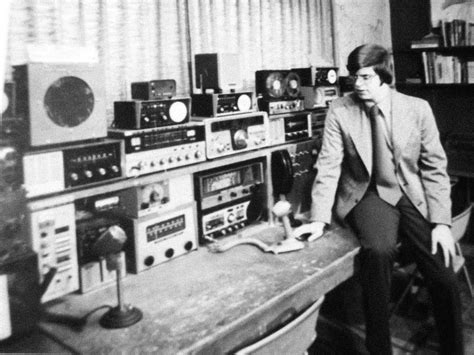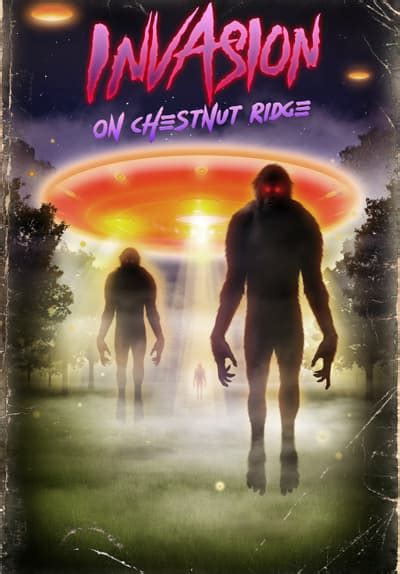by Charles Lear
 These days, more and more researchers are considering the idea that there is a unified theory for all things paranormal from Bigfoot to ghosts to UFOs. The idea that all, or at least many, things paranormal derive from a common source was considered as early as the 1940s by Meade Layne and other members of the Borderland Sciences Research Association. This has been popularized in more recent times by John Keel and Jaques Vallée. There was a great deal of resistance to this way of thinking among paranormal enthusiasts, but a case in Pennsylvania from 1973 has elements to it that that likely caused many to reconsider their positions.
These days, more and more researchers are considering the idea that there is a unified theory for all things paranormal from Bigfoot to ghosts to UFOs. The idea that all, or at least many, things paranormal derive from a common source was considered as early as the 1940s by Meade Layne and other members of the Borderland Sciences Research Association. This has been popularized in more recent times by John Keel and Jaques Vallée. There was a great deal of resistance to this way of thinking among paranormal enthusiasts, but a case in Pennsylvania from 1973 has elements to it that that likely caused many to reconsider their positions.
The case is described by Berthold Eric Schwartz, M.D. in the July 1974 issue of Flying Saucer Review in his article, “Berserk: A UFO Creature Encounter.” According to Schwartz, he got a call on a Sunday in September from Allan Noe of the Society for the Investigation of the Unexplained (a New Jersey based organization founded by Ivan T. Sanderson) and Stan Gordon, director of the Pennsylvania based Westmoreland County UFO Study Group. They told him they were in the midst of a great deal of activity involving UFOs and creatures. Gordon, in the documentary, Invasion on Chestnut Ridge, describes the activity as “a major UFO-Bigfoot wave.”
New Jersey based Schwartz made plans to visit the area and these were moved forward when he got a call on October 27, 1973, from his office (he was a psychiatrist) in New Jersey. He was told to get in touch with Gordon “immediately.” According to Schwartz, Gordon had called about a “multiple witness landing–creature case with dangerous overtones.”
 Schwartz contacted Gordon and Gordon told him about the case and said that an episode where the primary witness went into a “fugue state” had been caught on tape during a field investigation. Schwartz says in the article, “I gave first-aid advice and made arrangements for my first visit the following week.”
Schwartz contacted Gordon and Gordon told him about the case and said that an episode where the primary witness went into a “fugue state” had been caught on tape during a field investigation. Schwartz says in the article, “I gave first-aid advice and made arrangements for my first visit the following week.”
Schwartz says he was in Pennsylvania from November 1–3, 1973, that he listened to the tapes that were made, interviewed the WCUFOSG members who were involved, interviewed the witnesses, and “conducted a psychiatric interview” with the primary witness. Schwartz also spoke by telephone to a Pennsylvania state trooper who was there and “read Gordon’s excellent written collations.”
According to Schwartz, at around 10:30 p.m. on Thursday, October 25, 1973, Gordon got a call from Trooper Byrne (pseudonym), who told him something “unusual” had taken place on a farm near Greenburg. The primary witness, Stephen Pulaski (pseudonym), was at the station and said over the phone that Byrne had witnessed evidence that backed up what he had seen before Byrne arrived.
The study group went out to meet 22-year-old Pulaski and his father, and they all went to the site where they arrived after midnight. There were six study group members: a photographer, a physics teacher, a radiation expert, a sociologist, a former Air Force pilot, and Gordon. Once they were assembled, Pulaski told his story.
According to Pulaski, he and about fifteen witnesses, who included relatives and neighbors, watched as a large red ball of light hovered over a field. Pulaski, armed with a 30.06 rifle, got in his car to drive up to the area, and a pair of twin neighbor boys went along. As they approached, the car’s headlights dimmed. The object was slowly descending into the field, and the three got out of the car and walked towards it. As they came over a hill crest, they saw what they described as a dome-shaped object about 100 feet in diameter making a sound “like a lawn mower.”
One of the twins yelled out that he could see something moving along the fence. Pulaski had two tracer bullets loaded and fired one over the heads of what were described as two creatures, one about eight-feet tall and the other about seven-feet. Their height was determined by the six-foot posts of the fence they were slowly walking along. Both creatures were covered with dark grey hair, had greenish-yellow eyes, and had arms that hung almost to the ground.
The large creature was touching the fence posts as it passed them, and the smaller creature seemed to be taking extra long strides to keep up. They seemed to be communicating, making noises like that of a crying baby.
Pulaski fired his remaining tracer over their heads and the creatures kept walking. He then shot three live rounds into the chest of the larger creature, as one of the twins ran scared back to the house.
The large creature made a whining noise and reached out to the smaller creature. At that moment, the dome blinked out, and the noise it seemed to making stopped. The creatures then turned around and walked slowly towards the woods. The area where the lit dome had been was glowing brightly.
Pulaski reported the incident to the police and Byrne got to the house at about 9:45 p.m. In the police car, he and Pulaski went up to the field, and Byrne saw the glowing area. He speculated that if one bent down there, one could read a newspaper. Byrne maintained he couldn’t be sure that the glow wasn’t caused by his headlights, but Schwartz reports that Byrne moved the car so that the lights shone elsewhere and that he still saw the glow.
They got out of the car and looked around. They then heard a noise from the woods as if a large animal was walking towards them. They moved, and the noise seemed to follow them. When they stopped, the noise stopped. Byrne wanted to get closer to the circle of light but Pulaski told him, “I don’t get paid for being brave. I’m not going any further.” Byrne thought about going on alone but thought better of it in light of Pulaski’s being armed and in a scared state of excitement.
As they headed back to the car they heard more noise, and Pulaski said he saw something brown coming towards them. He asked Byrne for permission to shoot, Byrne said yes, and Pulaski shot his last bullet. Pulaski again yelled that there was something coming towards them, and they jumped into the car and sped off. Byrne got ahold of himself and turned the car around. He shone his high beams into the woods, and according to Pulaski, the glowing area had vanished. The sound was no longer heard at this point.
The study group arrived at around 1:30 a.m. and went to the field with Pulaski and his father. When they got to the field, there was no glowing ring. They had checked Pulaski earlier for radiation, and they checked the field as well, and there were no unusual readings. When the group went into the field, Pulaski and his father stayed by the truck. The Pulaskis yelled out to the group that they saw a glow that lit up the farm house, but it was gone by the time the group came back to see. Two group members went to investigate and found nothing.
The group and the Pulaskis went up into the field. Stephen had his dog with him and the dog became alert and started tracking. The dog then became focused on a spot at the edge of the woods. Then, Stephen started rubbing his head and face and started weaving as if he were going to faint. His father went to support him and Stephen started growling and then threw his father off. The dog ran towards Stephen, and Stephen went on the attack, sending the dog off whining.
As two group members reported feeling light-headed, Stephen ran around growling and then collapsed facedown into a pile of manure. As he was coming out of his altered state he yelled, “Get away from me! It’s here! Get back!” He continued yelling warnings and mumbled that he could protect the group. During this, the group could smell a strong smell of sulfur. Stephen said he saw a man “in a black hat and cloak, carrying a sickle.”
When Schwartz later conducted a psychiatric interview with him, Stephen went into trances and Schwartz struggled keep him in a conscious state. Stephen reported seeing the creatures, the man in the black robe, receiving warnings about the world ending if mankind doesn’t straighten out, and “seeing the date 1976.”